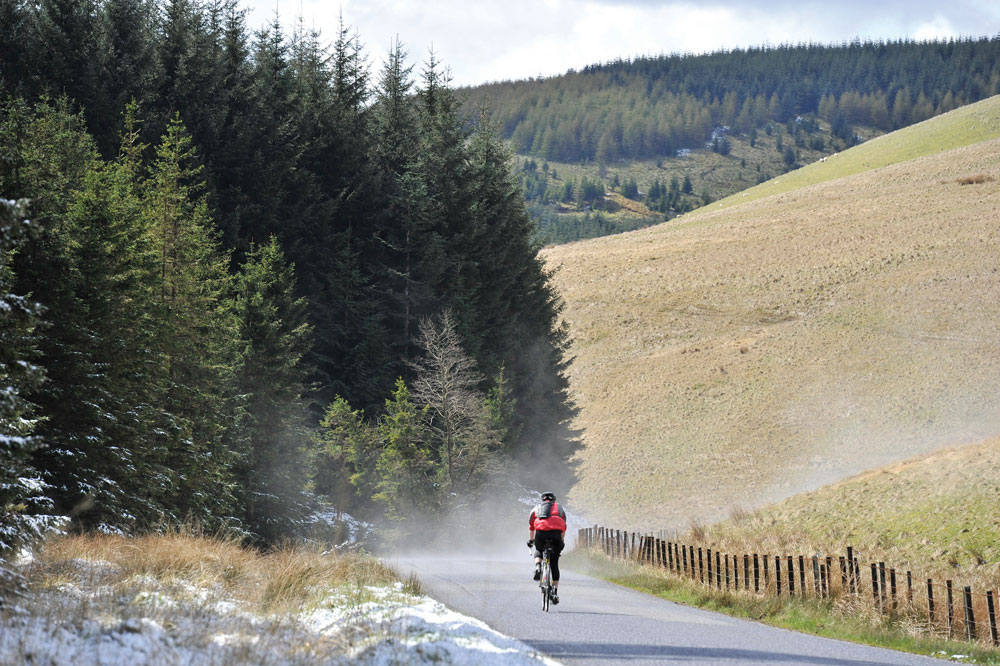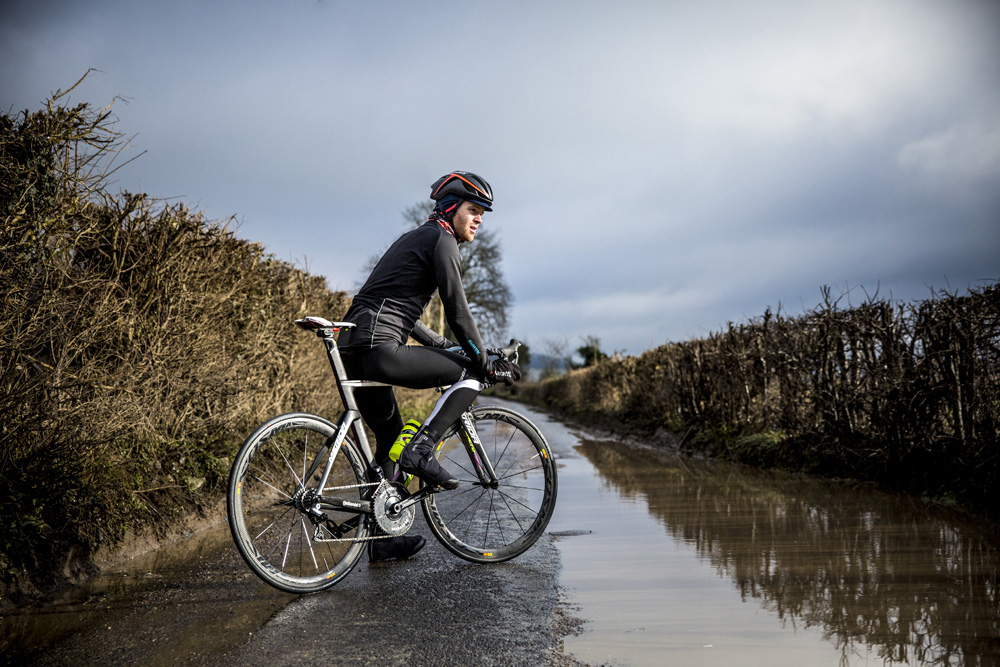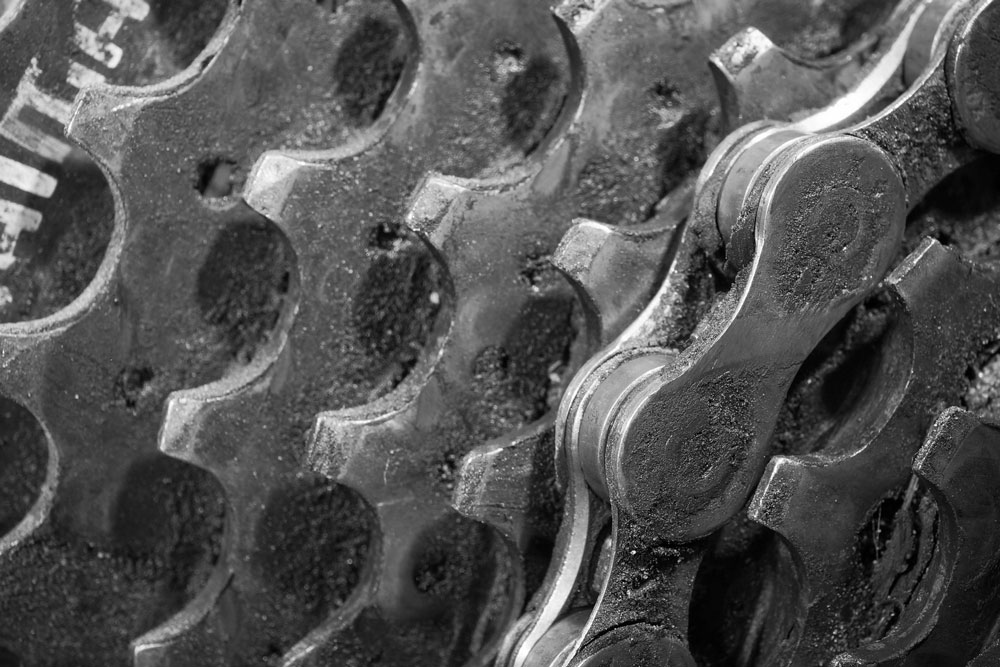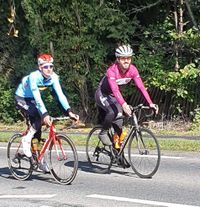Cycling in snow and ice: how to stay safe and have fun
Top tips to have fun in the snow (and stay upright)

So often it's a promise that falls flat. "It's going to snow," insist the weather people, indicating lavish blankets of the white stuff all over the place.
But the anticlimactic reality turns out to be a light dusting on top of Scafell.
This week, though, schoolkids across the UK are rejoicing, with the snowfall as far ranging as Oxford, to Wales, to Scotland, and shutting more than 200 schools.
Conversely parents all over the place are despairing at this turn of events, as they scrabble to request days off, or brace themselves to WFH while fielding constant requests for food (and, more positively, maybe a bit of help with a snowman).
It's a bit of a head-scratcher for us cyclists too. Snowy rides, after all, can be very memorable – and not just for falling off constantly. After all, what better than heading out into such a magical landscape?
But snow, and its far more devious sibling, ice, can be tricky to negotiate – we would certainly advise avoiding the latter at all costs. We've gone through a few things to look out for and other things you will need.
Tips for cycling in snow and ice
Beware of black ice
The latest race content, interviews, features, reviews and expert buying guides, direct to your inbox!

It's never really the snow that's the problem, that's manageable even on a road bike, but black ice is your slick tyres nemesis. It's often very hard to see and if you're going at a decent speed it could prove very costly.
If your ride goes over areas that regularly have water build-up and, like many country roads, isn't gritted you should either avoid or be very careful. Try to keep central to the road as much as you can avoiding the gutter of the road.
Under bridges and around drains can be hugely hazardous in these conditions so take it steady.
This may sound odd as a cyclist, but aim for busier roads. While vehicle exhaust fumes are causing climate change (among other things) they do help melt the dangerous ice making it at least safe to ride a bike on.
Don't get bullied by the cars either, your safest place on the road is in the middle of the road which is even recommended as well as being legal.
Go loosey goosey

As my driving instructor once said, "don't show the whites of your knuckles". Basically, don't grip too hard. This applies to cycling in snow and ice too. You're likely very cold, in discomfort and maybe tense but you should keep in mind that you have a loose grip on the bars father than holding on for dear life.
When you're tense you go rigid which changes how you control your bodyweight. Chill out, hum a happy tune, think of the coffee, mince pie and hot shower you're going to have when back home.
Relax your shoulders and sit lie you would on any other ride with most of your weight on the rear wheels with a smooth pedal action.
If you find yourself gripping hard on the bars just move your hand about a little bit and it should relieve the tension that's built up and give you more control.
Use the brakes carefully, with more emphasis on the rear than the front, which is not your friend in slippery conditions. Apply them very progressively with a gentle touch. You can even repurpose those childhood skills with a feet-down stop if you feel you need to.
Adjust your tyre choice

If you really go into detail about tyre pressure such as reducing the pressure when riding in the wet so that there is an increased contact area with the asphalt below, this also applies to ice.
The wider the tyre anyway gives you a better contact patch and more grip because of that. So if you have got the option to use wider rubber then go for it. Also, better puncture protection is vital as you won't be wanting to change an inner tube when you can't even feel your fingers!
Go gravel
If there was ever a time for that gravel bike you bought for winter to earn its keep, now is it.
The relaxed position, disc brakes and especially the fat tyres, are going to be a game changer if you're likely to encounter snow – although, as always, stay well clear of any ice.
When things are snowy or frosty, heading off-road on the gravel machine is likely to be your safest, most enjoyable bet. There should be plenty of grip available and, of course, you get to explore those pristine landscapes rather than seeking out car emissions to melt the stuff. Do let someone know where you're going though.
Dress for the conditions

It goes without saying that you're going to want to layer up. Your hands and feet suffer particularly when it's cold. Quality winter gloves and overshoes will help to keep you more comfortable and ultimately safer due to increased ability to concentrate (and feel then handlebars).
Visibility in snow flurries is important both for you and other road users. Clear glasses will prevent your eyelashes from working on overdrive, whilst a set of bike lights will help mark you out on the road.
Treat your bike afterwards

Whilst we Brits aren't typically great at dealing with snow and ice, councils are fairly good at gritting the roads (in some areas). Grit prevents the ice from forming and snow from settling - but it's basically an exfoliator for your bike components.
Whilst you'll be thankful the crystals are there as you ride, make sure you give your bike a thorough wash after your ride, drying it down and applying a thin layer of lube to prevent rust. All ready to do it all again tomorrow...
Hi, I'm one of Cycling Weekly's content writers for the web team responsible for writing stories on racing, tech, updating evergreen pages as well as the weekly email newsletter. Proud Yorkshireman from the UK's answer to Flanders, Calderdale, go check out the cobbled climbs!
I started watching cycling back in 2010, before all the hype around London 2012 and Bradley Wiggins at the Tour de France. In fact, it was Alberto Contador and Andy Schleck's battle in the fog up the Tourmalet on stage 17 of the Tour de France.
It took me a few more years to get into the journalism side of things, but I had a good idea I wanted to get into cycling journalism by the end of year nine at school and started doing voluntary work soon after. This got me a chance to go to the London Six Days, Tour de Yorkshire and the Tour of Britain to name a few before eventually joining Eurosport's online team while I was at uni, where I studied journalism. Eurosport gave me the opportunity to work at the world championships in Harrogate back in the awful weather.
After various bar jobs, I managed to get my way into Cycling Weekly in late February of 2020 where I mostly write about racing and everything around that as it's what I specialise in but don't be surprised to see my name on other news stories.
When not writing stories for the site, I don't really switch off my cycling side as I watch every race that is televised as well as being a rider myself and a regular user of the game Pro Cycling Manager. Maybe too regular.
My bike is a well used Specialized Tarmac SL4 when out on my local roads back in West Yorkshire as well as in northern Hampshire with the hills and mountains being my preferred terrain.


